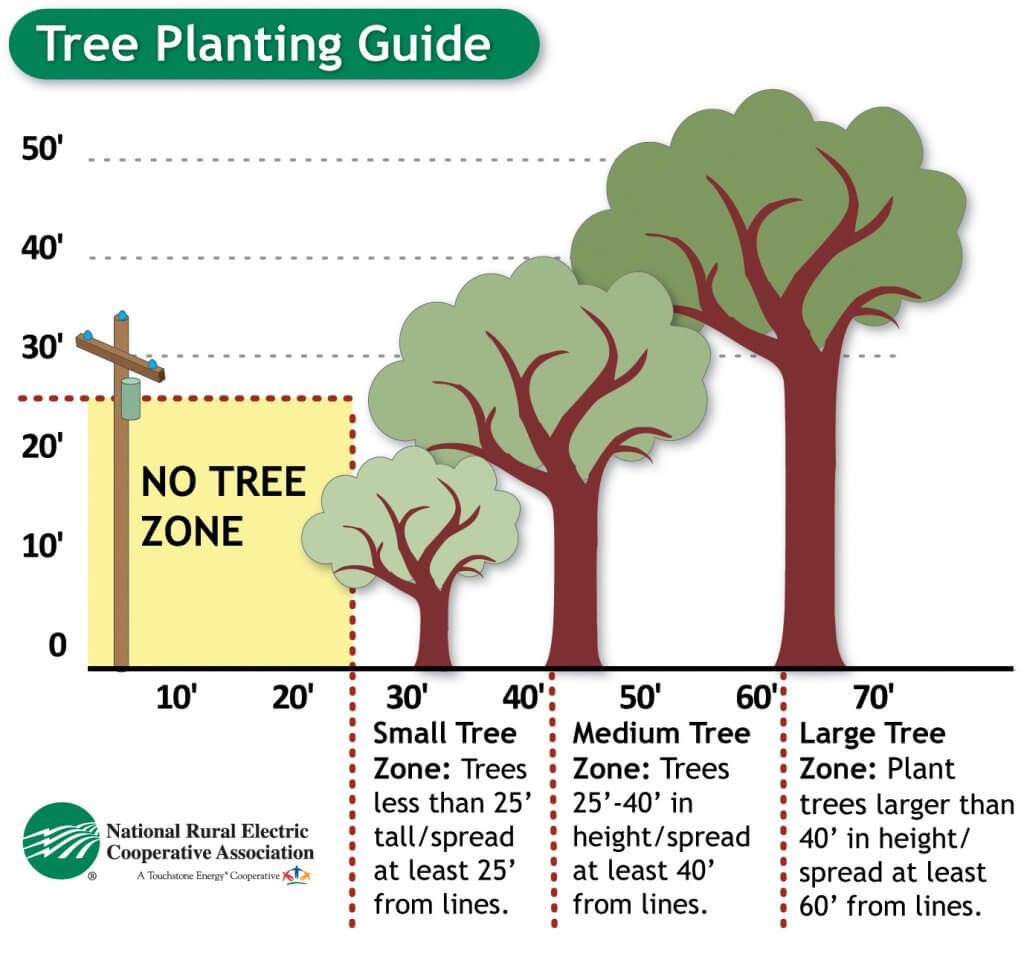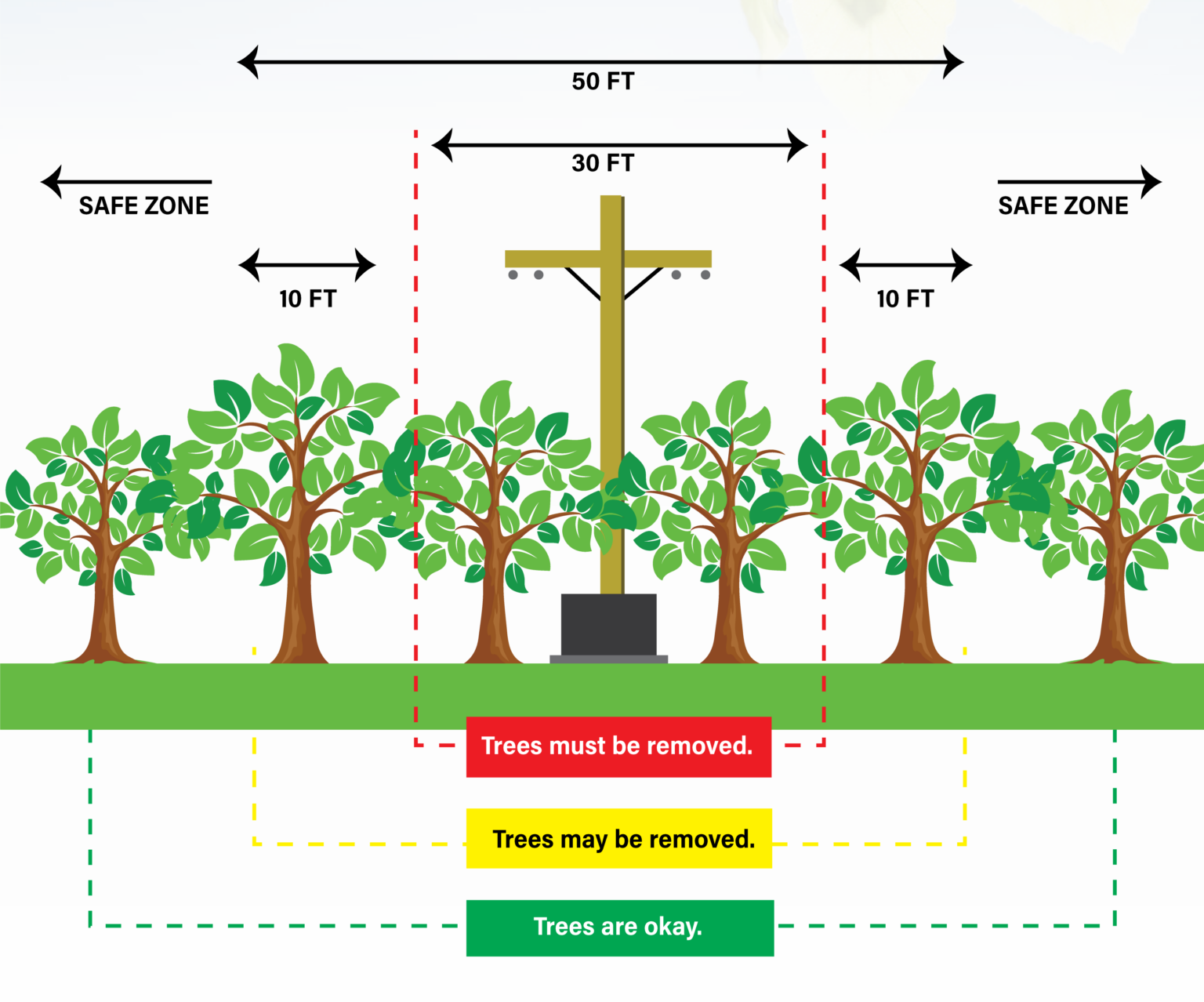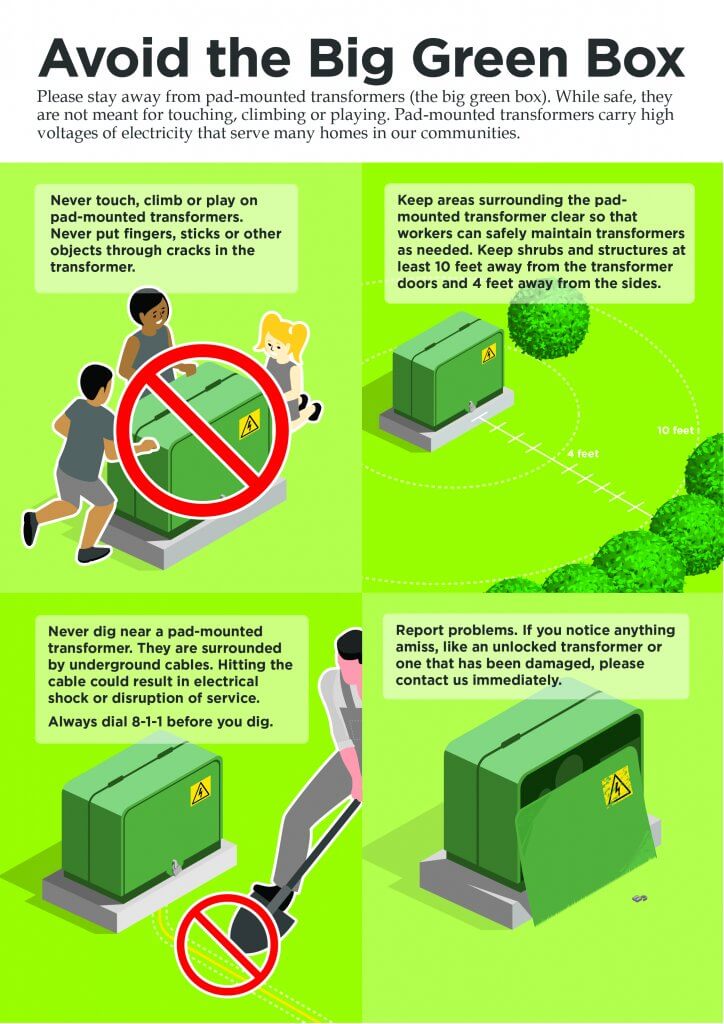The power line running either on or in close proximity to your property plays a pivotal role in delivering the energy that serves our entire community. We recognize the significance of trees to homeowners and the overall well-being of our neighborhoods. However, as trees naturally grow and expand, they may inevitably intersect with power lines, emphasizing the critical necessity of regular maintenance to trim and clear power line right-of-ways. This proactive approach is not only vital for public safety but also enhances our crew's accessibility to power lines.
Oakdale Electric Cooperative is proud of its robust right-of-way maintenance program, encompassing comprehensive tree trimming and effective spraying techniques. Through these concerted efforts, we ensure the continuity of safe and reliable power supply while harmoniously preserving the natural beauty of our communities. Your support in this endeavor is essential as we collectively strengthen the security and resilience of our electrical infrastructure.
Vegetation Management FAQs
An electric right-of-way (ROW) is a strip of land a electric utility uses to construct, maintain, or repair a power line. OEC has a 20 foot right-of-way on each side of the powerline.
OEC is governed by many State and Federal regulations and regulatory bodies such as National Electric Safety Code (NESC), and the State of Wisconsin Department of Natural Resources (DNR) that requires us to maintain these ROWs.
Whether you are planting a single tree in the front yard or several thousand trees to start a plantation, it's important to consider the species of trees and the location in which you plan to plant them. This is especially important if you are planting trees near overhead power lines.
- Oakdale Electric Cooperative requires 20 feet of clearance on both sides of the conductor.
- Be sure to plant your trees far enough away from power lines so that when the trees are fully grown, there will still be 20 feet of clearance to the power line without the need for trimming.
- Remember, if you chose to plant trees in the right-of-way or too close to the right-of-way, your trees may need to be trimmed or cut some day.
The tree trimming program is on a 5-year rotation. This means that we have tree trimming contractors coming to your area once every 5 years. The contractor is instructed to clear 20 feet both sides of the conductor. They also will be removing trees or tree branches that hang over the lines as well as trees and brush growing in the right-of-way. Trees that are dead, dying or lean heavy towards the line are considered to be hazard trees and will need to be removed even if they are outside of the right-of-way.
The spraying program is a safe and efficient way to help keep right-of-way clear of trees and brush through the careful use of herbicides. Selectively controlling trees and weeds along power lines and other right-of-ways not only assures safe and easy access for service and maintenance needs but also preserves and enhances natural surroundings.
The spraying is done 2 years after trimming.
For member requests to have a tree removed and/or trimmed the member must mark the tree(s) to be cut and provide a daytime contact number. An OEC representative will visit the site and decide on an appropriate action. If the OEC representative is unable to contact member as to what work will or will not be done, a door hanger will be left with that information.
Oak Wilt
Oak wilt is caused by a fungus that enter an oak through either a root graft or a fresh wound. The fungus invades water-conducting vessels and produces balloon-like projections called tyloses that can plug the vessels. The lack of water flow causes leaves to wilt rapidly and fall from the tree.
Oak trees are most susceptible to overland spread in the spring time, form bud swelling until two to three weeks past full leaf development (April 15 to July 1). If an oak is wounded during this time, OEC will cover the wound with tree wound paint. Tree wound paint can actually slow the natural wound closure process and OEC limits the use of wound paint to the situation described above.
Annosum Root Rot
Over 200 woody species have been reported as hosts, but most commonly observed on red and white pine in Wisconsin. It may appear the same as pocket gaps in a plantation, but not to be confused with beetles. You will notice fungal decay below the needle bed or duff layer (looks like a mushroom or commonly known as a conk) and it can move from tree to tree thru the intertwined root system. Prevention is the best approach by spreading a thin layer of Sporax (sodium tetraborate decahydrate) on freshly cut stumps Basidiospores are most often produced when the temperature is between 41 and 90 degrees Fahrenheit. OEC follows the practice of treating all red, white , and jack pines stumps within these temperature ranges.
In rural areas, brush is mowed with the forestry mower. In urban areas, the limbs are chipped and hauled away. Wood larger than 4 inches in diameter is left on site in a manageable length at the base of the tree in urban areas and put on the edge of the right-of-way in rural areas.
If you have inquiries about tree-related matters or wish to explore tree planting initiatives, we encourage you to connect with a knowledgeable OEC representative by calling 1-800-241-2468.
Our team is ready to provide guidance and information to support your tree-related endeavors and promote a greener, more sustainable community.



